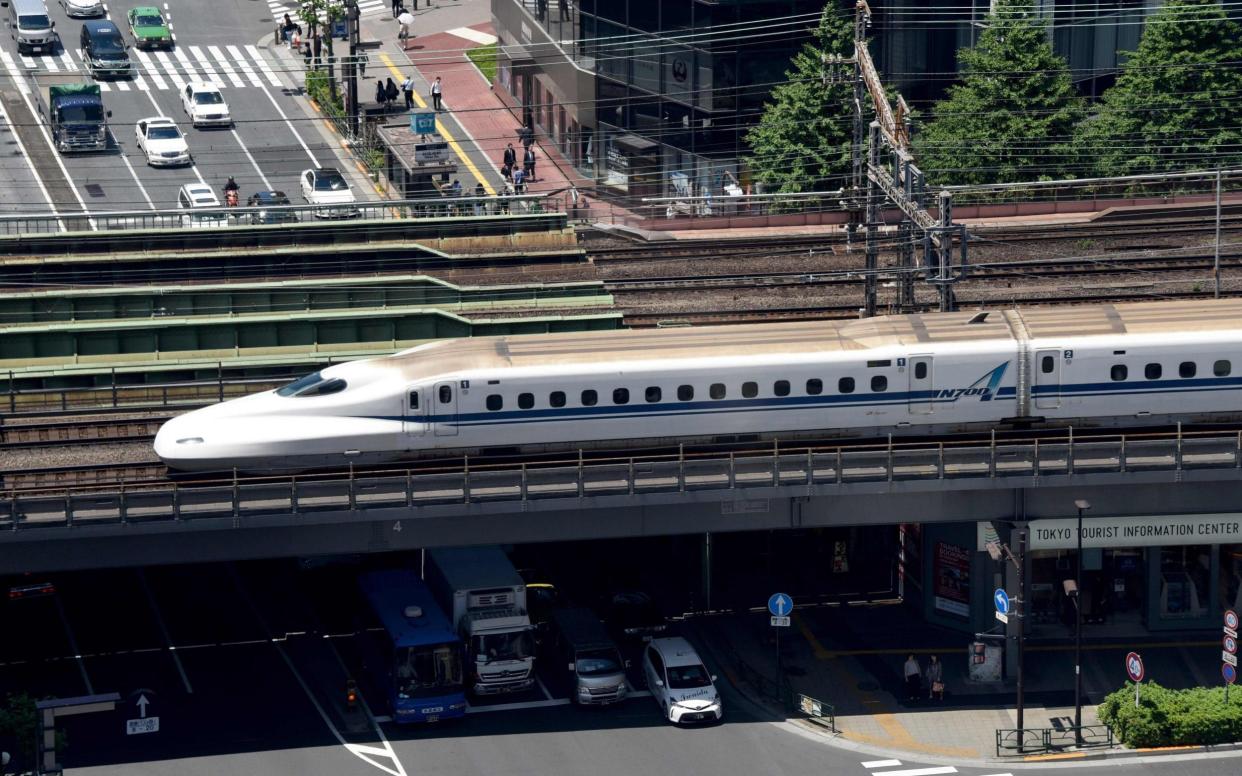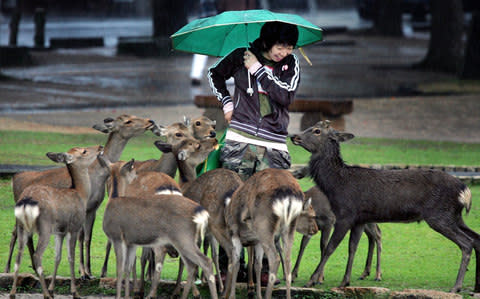Why trains in Japan will bark like a dog and snort like a deer

It looks like an ordinary train – until it starts barking like a dog and snorting like a deer.
Japanese officials have created a novel system which involves a moving train blaring animal sounds in order to prevent collisions with deer on the tracks.
Hundreds of deer stray onto train tracks across Japan every year, mainly in remote rural areas, causing widespread rail disruption.
A team at the Railyway Technical Research Institute (RTRI) have created an unusual system to deal with this, which involves animal noises being blasted from the train.
Early tests have found that it reduced animal sightings from the train by as much as 45 per cent, according to media reports.

Its creators reportedly hope to put the anti-deer collision measure into practical use by March next year. The problem of rail disruptions caused by deer and other wild animals straying onto Japan’s train tracks has risen in recent years, particularly in mountainous regions.
A record 613 cases of train services suspended or delayed for at least 30 minutes due to animal collisions were reportedly recorded in Japan in 2016 – an increase of 185 compared to the previous year.
The concept of the new system is inspired by the fact that deer are known to snort a short, shrill sound to alert other deer when they are in danger.
The sound of a deer snort was combined with the barking of an enemy dog, in the hope that the combined sounds would keep other wild animals at a distance from the tracks.
In early tests conducted on board a train after dark, the deer’s snort was played for 3 seconds, followed by 20 seconds of a dog barking.
It found that deer were only sighted 7.5 times per 33 feet from on board the trains – which was around 45 per cent less than normal. “We hope to finish it into a system that works in mountainous areas and elsewhere so railroad companies will want to introduce it,” an official at RTRI told the Asahi newspaper.

 Yahoo News
Yahoo News 
